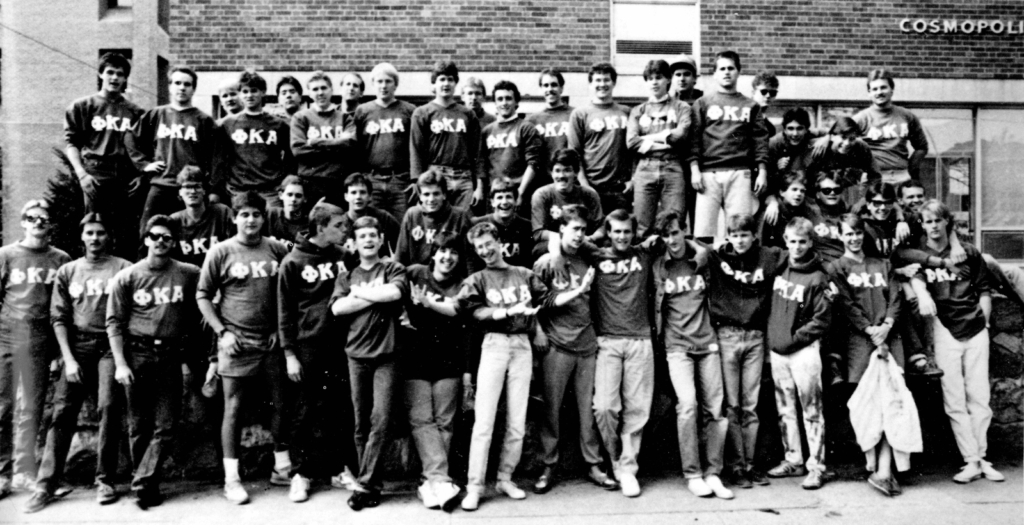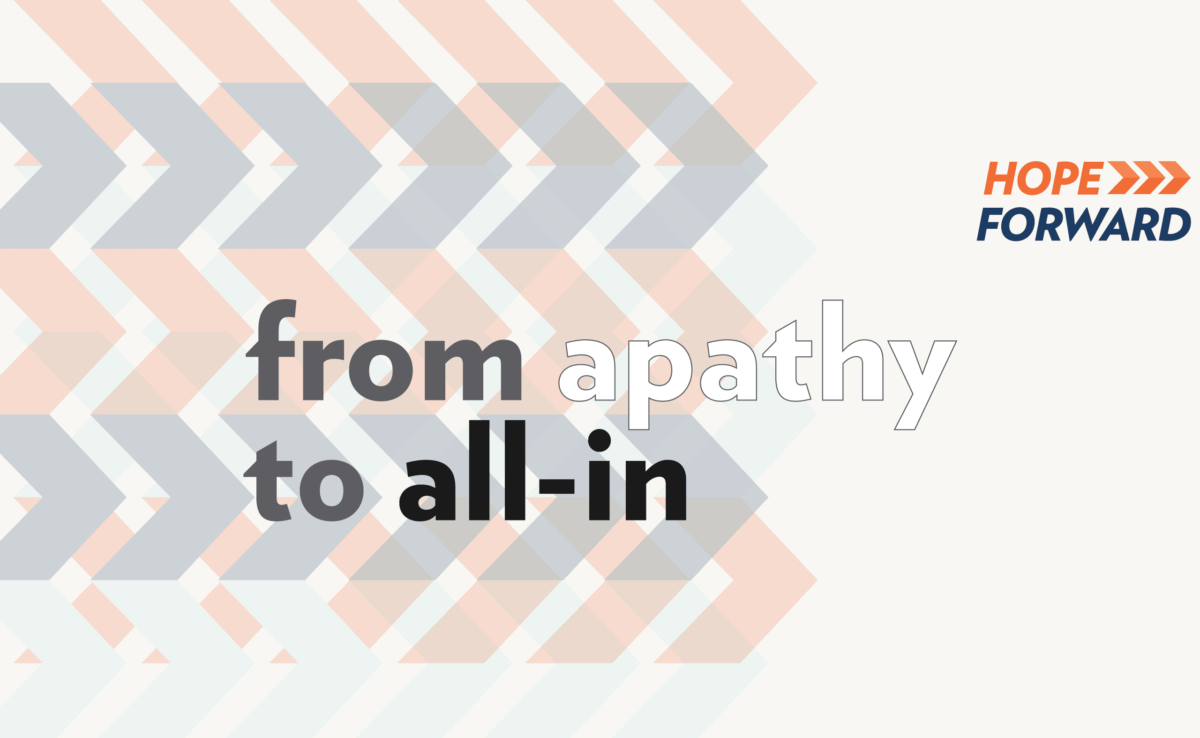From Apathy to All-in
In some ways, I’m a model of Orange and Blue: I’m an alumnus (’88), married to an alumna (’87); we’re parents of two Hope graduates; and I’ve worked at the college for 35 years, currently as director of process and innovation. Hope College has been a large part of my life, and I’m enthusiastically better for it.

But there’s another side to this. I came to Hope very reluctantly upon strong recommendations from my parents and siblings. Much of my time in college was spent in frustration or frivolity (I was a Cosmo, which simultaneously kept me barely in and nearly out of college). As an employee, I’ve had periods of apathy or irritation as I participated in the sausage-making of higher education. As an alumnus, I’ve felt misunderstood at times, and sometimes unhappy with decisions that “the college” has made — and I know that friends have sometimes been frustrated with Hope, too.
I was even getting ready to move on to the next phase of my career, away from Hope College, when Matt Scogin announced Hope Forward. At first, I saw it as just another fundraising campaign slogan, but then I took a closer look at it and its three pillars of access, generosity and community. Now, I’m all-in.
At first, I saw it as just another fundraising campaign slogan, but then I took a closer look at it and its three pillars of access, generosity and community.
Now, I’m all-in.
»
Access
Some of the criticism of Hope by my friends centered on affordability — they couldn’t afford to send their own kids to the college. So, I initially focused on the first of the pillars: access. Access is more than just being affordable, but “affordable” was the hook that got me re-energized and even more involved. I like the idea of helping make it possible for students to have the same opportunity that I had. I also like the idea of challenging the cost model of the machine of higher education, and maybe showing the world that other colleges should be doing what we’re doing.
The college’s goal is to endow and fully fund tuition, with students asked to contribute to Hope after graduation to support future generations rather than pay in advance. Students and families will still need to pay for room, board and the other costs of attending Hope, but Hope Forward will bring back the ability for a student to work full-time in the summer and maybe part-time during the school year and graduate without debt. Wow, that’s how college used to work until sometime in the mid-1980s when education inflation — at colleges and universities across the country — started significantly outpacing the rest of inflation.
Access is more than just being affordable, but “affordable” was the hook that got me re-energized and even more involved.
Generosity
While in the future gifts will sustain Hope Forward, putting it into place for every student is going to require the college to raise three to five times more money than we’ve ever raised before. My position at Hope is very flexible and I get involved in many things — I work in business process improvement, departmental organizations and other buzzwords — so I’ve had a chance to work with our philanthropy team, since we’re not going to raise three to five times more money than we ever have by doing things the same way.
Fundraising on behalf of access and affordability would seem to lead naturally to Hope Forward’s pillar of generosity — and, I’ll admit, at the beginning I mainly studied generosity to figure out some marketing hooks to get people to donate money. But, one day a co-worker who had worked at churches and other non-profits talked with me about her damaged relationship with generosity, and I began to see the pillar differently.
It never occurred to me that people have a relationship with generosity, let alone a damaged one. I thought about my own relationship with generosity, and realized it wasn’t very intentional: I generally followed patterns handed down to me from my parents or encouraged by tax laws. So, I went all business-process-improvement on myself and defined the goals, scope, and practices of my relationship with generosity. Donating time and cash to Hope and Hope Forward is a part of that relationship, but there are other parts that have nothing to do with Hope College. I’ve talked with many people since then and challenged them to consider their relationships with generosity, healing wounds, making repairs, or updating strategies along the way. The ones who took the challenge came back to me feeling refreshed and revitalized, just as I am.
Community
That left me with community, the third pillar of Hope Forward. While I’ve been a part of the employee community for 35 years and interacted with the student communities along the way, I’ve been pretty disconnected from my alumni friends. I’ve never been back for a reunion or gathering. So, I considered why I was connected in some ways and not connected in others.
These days, a lot of us are pretty cynical about institutions. For me, I realized that I had started seeing Hope College as an institution instead of as a community — and that it was keeping me from much of the community. So, I started reconnecting with my old friends, students I had lost track of, and alumni with similar interests but from different eras. I didn’t reconnect to raise money for the institution — I reconnected for me and for them. We’ve been having a great time! It’s also helped me remember and appreciate how Hope made those people and experiences a part of my life, and that we as a community are Hope College.
Generosity, Access, and Community. That’s Hope Forward. It’s not a handout, it’s not socialism, it’s not a gimmick. It’s a bold challenge to higher education and a bold challenge for all of us. Please study Hope Forward, consider your relationship with generosity, and keep connecting to our community. And maybe together, we can provide more access to a high-quality education right here in Holland, Michigan.
So that’s what I think about Hope Forward. I’d enjoy hearing what you think about college and especially Hope Forward, good or bad. If you want to share thoughts about Hope Forward, the college or the community, please send a message to me at hopeforward@hope.edu.
“Your windshield is a whole lot bigger than your rearview mirror. … We’re meant to be people who look forward.”

For more information about Hope Forward, please visit hope.edu/forward

